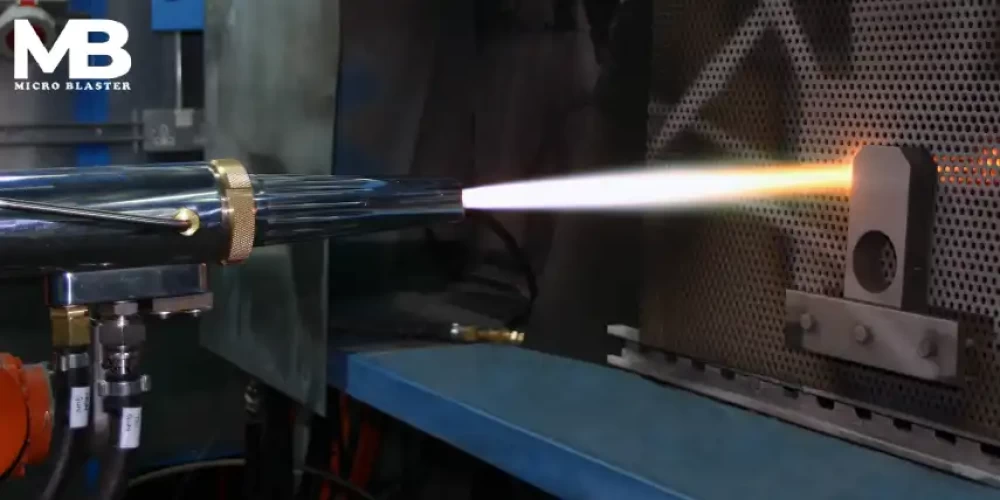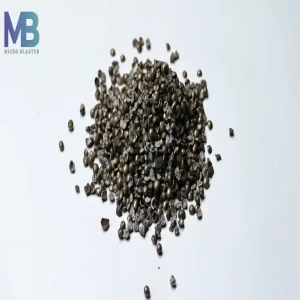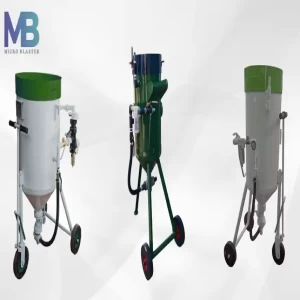Search

HVOF Temperature
HVOF, often referred to as high-velocity oxygen fuel, is a thermal spray coating technique that is used to apply coatings to various surfaces for improved tensile strength, corrosion resistance, and other beneficial properties.

HVOF, often referred to as high-velocity oxygen fuel, is a thermal spray coating technique that is used to apply coatings to various surfaces for improved tensile strength, corrosion resistance, and other beneficial properties. High temperatures experienced during HVOF spray coating operations lead the coating materials to quickly melt and solidify, giving coatings desired properties like strong binding strength and low porosity. A variable exact temperature can be attained during an HVOF technique depending on the unique setup, the materials being utilized, and the desired outcome of the coating application.
The HVOF gun procedure involves igniting an oxygen-fuel mixture (often hydrogen or hydrocarbon-based) in a combustion chamber. The ensuing high-speed, high-temperature jet of the coating material's particles accelerates and heats them. The temperatures used in HVOF procedures are normally between 2,500 and 3,500 degrees Celsius (4,500 and 6,300 degrees Fahrenheit).
The combustion chamber, where the fuel and oxygen combination ignites, reaches these temperatures. In order to obtain good adhesion and coating quality, the coating ingredients must melt and accelerate at a high temperature.
Understanding HVOF Coating Temperature
Thermal energy is carried by the high-velocity jet of hot gases produced by the burning of fuel and oxygen. The coating particles receive this energy, which causes them to quickly heat up and melt. The combustion gases accelerate the coating material particles to high speeds and cause them to heat up quickly. As a result, the particles melt and move toward the substrate in a semi-molten condition. The molten particles quickly solidify on the substrate surface upon impact, creating a thick and tenacious covering.
The coating particles' kinetic energy and speed are influenced by the high temperature. The particles are able to form a solid bind with the substrate thanks to the high temperature and speed combination, which improves coating adherence. The heat input to the coating material may be precisely regulated thanks to the HVOF gun with a chamber that controls temperature. This management is necessary to avoid excessive heating that can result in coating modification or thermal deterioration. Despite the fact that oxygen is an essential part of combustion, the oxidation of the coating materials is minimized.
High particle velocities and regulated combustion assist in shortening oxygen contact times, which limits oxidation and produces coatings with desirable characteristics. The microstructure of the coating is influenced by the high temperature and high-velocity combination. Rapid solidification of the molten particles creates a tiny, dense microstructure on the substrate, which frequently improves coating characteristics including hardness, wear resistance, and corrosion resistance. High temperatures are experienced by the coating particles, however, efforts are often taken to manage the substrate temperature to avoid overheating the base material.
The melting points and thermal characteristics of various coating materials differ. It's critical to pick a coating material that can endure the high temperatures produced by the HVOF process without degrading or experiencing unwanted chemical reactions. The melting point and heat tolerance of the substrate material must also be taken into account. The heat produced during the coating process shouldn't cause the substrate to melt or significantly alter its qualities.
HVOF Temperature for Coating Excellence
Thermal stress can result from quick heating and cooling cycles that affect both the substrate and the coating material. The performance of the coating over time may be impacted by cracking, delamination, or mismatched thermal expansion coefficients between the coating and substrate. Both the substrate and the covering material may oxidize as a result of oxygen being present during combustion.
Oxidation may have an impact on the coating's mechanical and corrosion-resistant qualities depending on the materials used. Oxidation may be reduced with the right coating material selection and combustion environment management. The heating of the coated particles is controlled by the temperature of the combustion gases. Better particle melting and bonding may result at higher temperatures. The kinetic energy of the particles is also impacted by their velocity, which has an effect on their impact and adherence to the substrate.
Making sure the coating materials receive a regulated heat input helps avoid overheating, which might cause changes to the material's characteristics or the creation of unwanted phases. Maintaining the proper temperature range depends on monitoring and changing the combustion parameters. The HVOF thermal spray coating process's temperature conditions have an impact on the microstructure of the coating. High temperatures and high particle velocities during rapid solidification can produce a thin and dense microstructure, which can improve the coating characteristics.
In order to guarantee even melting, solidification, and bonding, it is crucial to have a uniform and constant temperature distribution over the coating and substrate. Variations in coating thickness, adherence, and characteristics can result from uneven heating.
Importance of Monitoring HVOF Temperature in Coating Processes
Thermal spray gun stress can be reduced and coating adherence improved by preheating the substrate to a certain temperature. Preheating temperatures should be carefully selected to strike a compromise between improving adhesion and preventing overheating of the substrate. After coating, adequate cooling can aid in controlling the microstructure and coating characteristics. While slower cooling rates might encourage the formation of bigger, more brittle phases, rapid cooling can provide desirable material properties.
Here are the HVOF (High-Velocity Oxy-Fuel) temperatures in the coating importance: -
- Quality Control
- Coating Integrity
- Efficiency and Cost Savings
For the HVOF process to continue smoothly and consistently, temperature and other process parameters must be monitored and controlled. For process optimization, real-time temperature measurement and control systems are frequently utilized.
Safety precautions are essential to safeguard employees, equipment, and the environment because of the high temperatures involved. When working with HVOF systems, adequate ventilation and protective clothing are crucial.

